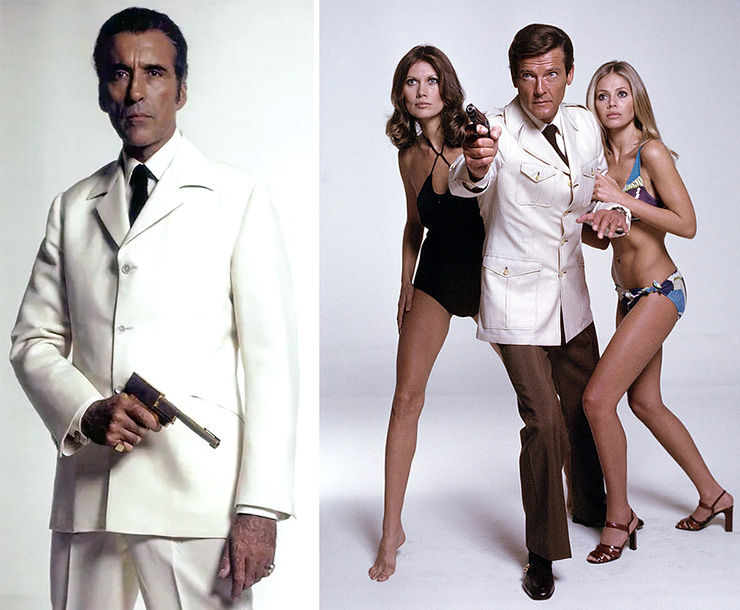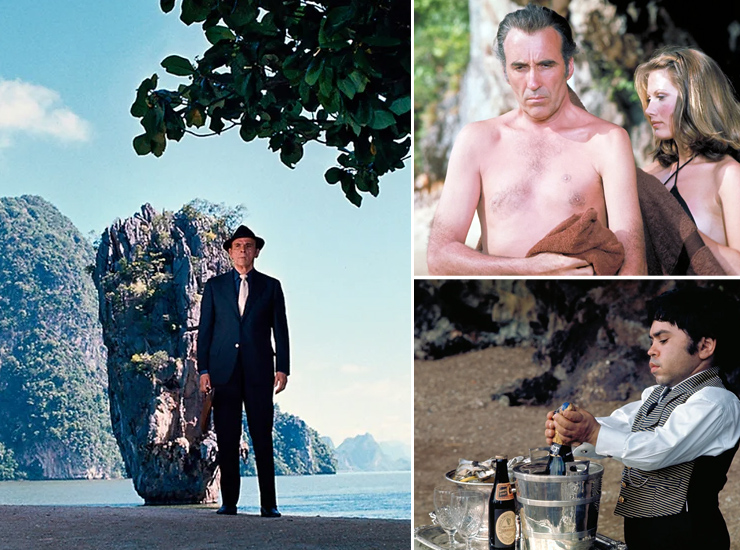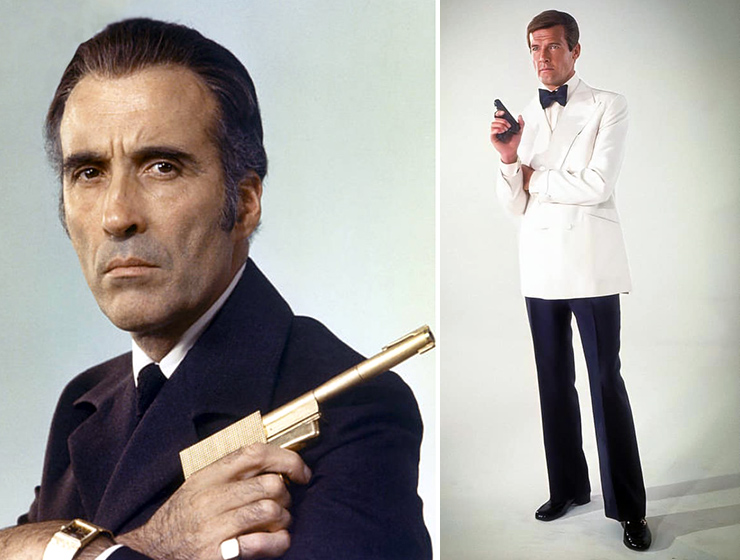|
The
Man With |
||
|
||
|
The
Man With |
||
|
||
 |
|
KEVIN HARPER looks back at the production of The Man With The Golden Gun, released 50 years ago as the 9th entry in the long-running James Bond film series. Roger Moore’s second James Bond film hit cinemas 18-months after his debut in the box-office smash Live And Let Die (1973), which finally proved that audiences would accept a new actor as Ian Fleming’s secret agent 007. |
 |
||||||||||
|
The casting of Roger Moore as James Bond in 1972 had been somewhat of a gamble for EON Productions and distributor United Artists, despite the actor being a well-known small screen presence as a result of two-decades worth of hit television series. George Lazenby’s one-film outing as 007 in On Her Majesty’s Secret Service (1969) was still considered a box-office failure when compared to the Sean Connery films, with audiences generally unwilling to accept another actor as Ian Fleming’s secret agent. After Sean Connery had made it abundantly clear that Diamonds Are Forever (1971) was a one-off return, the release of Live And Let Die (1973) with another new actor in the lead role was still a risk, and EON and United Artists wisely chose to debut the film in the USA a week before its UK premiere on July 5, 1973. Live And Let Die proved to be a huge hit with American audiences, and was filmed largely on location in Louisiana’s bayous, New Orleans, and New York City. Ultimately Live And Let Die out-grossed Diamonds Are Forever (1971) by a significant margin. United Artists had quickly green-lit the next 007 adventure to begin filming in April 1974 based on footage they had seen of Roger Moore during the production of Live And Let Die. |
||||||||||
|
||||||||||
|
As was tradition, the title of the next film had already been announced at the end of Live And Let Die (1973). Originally planned as the sixth film in the EON Productions series after You Only Live Twice (1967), and to be filmed on location in Cambodia, The Man With The Golden Gun was shelved due to the growing political unrest in the country, and the oft-cancelled On Her Majesty’s Secret Service put into production instead. Screenwriter Tom Mankiewicz had written much of The Man With The Golden Gun whilst on location for Live And Let Die and delivered his story outline dated August 20, 1973. Although retaining characters from Ian Fleming’s final James Bond novel, published posthumously in March 1965, The Man With The Golden Gun had a largely original screenplay by Mankiewicz and included two Chinese businessmen, Good Fat and his brother Bad Fat, who run a film studio in Hong Kong. Felix Leiter also appeared in the first draft, as he had in the novel. The current spate of action based martial arts films (many of which starred Bruce Lee) taking the cinematic world by storm, resulted in the inclusion of Kung Fu fighting accomplices and was Mankiewicz’ second attempt at incorporating current real-world trends into his storylines, following the successful borrowing of ‘Blaxploitation’ themes for Live And Let Die (1973). |
||||||||||
 |
||||||||||
|
As Ian Fleming’s THE MAN WITH THE GOLDEN GUN had been set in Jamaica, it did not make sense to have another film based in the Caribbean, so the filmmakers scouted potential locations in the Middle and Far East, including Bangkok, Beirut, Singapore and Hong Kong. This resulted in the discovery of the rocky islands in Phang Nga Bay, near Phuket in Thailand, which became the ideal exotic lair for the title character of Scaramanga. As a result of their appearance in The Man With The Golden Gun, the islands near Phuket later became a popular tourist destination, and the area was used again in Tomorrow Never Dies (1997). The first draft screenplay by Tom Mankiewicz dated October 15, 1973 now included the island hideaway and a mistress for Scaramanga named Delia, with the two brothers now combined into one character named Hai Fat. A river pursuit through Bangkok’s floating market was planned to rival the spectacular boat chase in Live And Let Die (1973). As the scripting process continued there was growing tension between Tom Mankiewicz and director Guy Hamilton, and the writer decided to step away after working on three Bond films in a row. Long-time Bond screenwriter Richard Maibaum was then brought in to revise the Mankiewicz screenplay, adding the search for the missing Solex Agitator into the story to expand the energy crisis subplot, and changing the name of Scaramanga’s lover to Andrea. The relationship between co-producers Harry Saltzman & Albert R. Broccoli was also breaking down, and by now the partners were taking it in turn to oversee the production of each film, with ‘Cubby’ the main driving force behind The Man With The Golden Gun. Saltzman’s wife Jacqueline’s recent cancer diagnosis and personal financial difficulties led to his bankruptcy in 1975, which ultimately resulted in the sale of his half of the James Bond rights to United Artists. |
||||||||||
 |
||||||||||
|
CONTINUED >> |
|
|||||||||
|
|
||||||||||
|
||||||||||
|
|
||||||||||